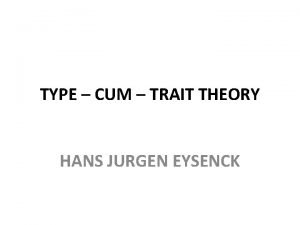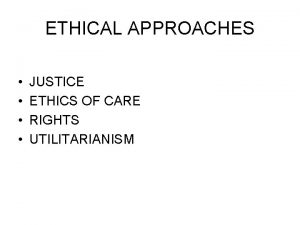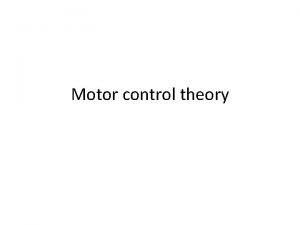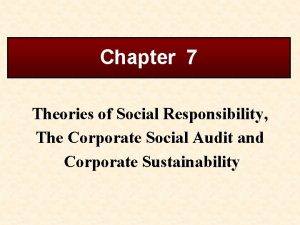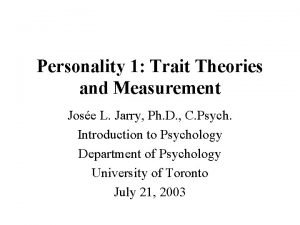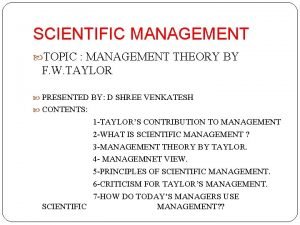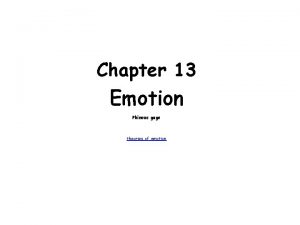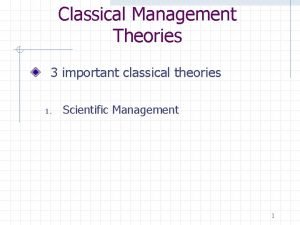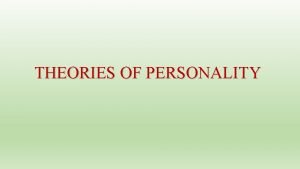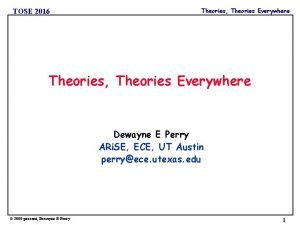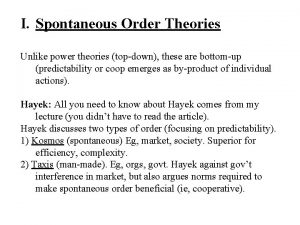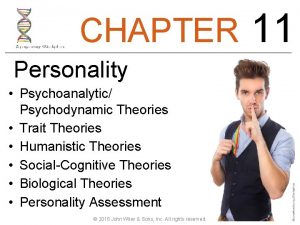Theories of War Theories of War TOPICALITY OF






























- Slides: 30

Theories of War

Theories of War TOPICALITY OF WAR ISSUES STUDYING In Western Europe since the late 18 th century, more than 150 conflicts and about 600 battles had taken place. Approximately 90– 95% of known societies throughout history engaged in at least occasional warfare, and many fought constantly (Lawrence H. Keely, War before Civilization)

The Human Security Report 2005 documented a significant decline in the number and severity of armed conflicts since the end of the Cold War in the early 1990 s.

Theories of War However, the evidence examined in the 2008 edition of the Center for International Development and Conflict Management's “Peace and Conflict" study indicated that the overall decline in conflicts had stalled.

Theories of War Since the early 2000 -s about 120 armed clashes took place in the whole world. They comprised 80 countries. Their price is 6 million of people killed during them.

Theories of War DEFINITIONS: 1. War is the “continuation of political intercourse, carried on with other means” (Carl Clausewitz, On War)

Theories of War 2. War is interaction in which two or more opposing forces have a “struggle of wills” (Carl Clausewitz, On War)

Theories of War 3. War is open clash in which two or more sides apply arms. It lasts for the definite period for the area control (Dan Smith, The State of War and Peace).

Theories of War 4. War is not only warfare. It’s also a cultural entity, and its practice is not linked to any single type of political organization or society. It is the universal phenomenon whose form and scope is defined by the society that wages it (John Keegan, History of Warfare).

Theories of War Separate War from other types of violence! War is not necessarily considered to be the same as occupation, murder, or genocide because of the reciprocal nature of the violent struggle, and the organized nature of the units involved. War is the “collision of two living forces" and "total nonresistance would be no war at all" (Carl Clauzewitz, On War).

Theories of War WAR REASONS 1. Decision-making to wage War is the complicated process engaging a lot of persons and connecting with the wide range of circumstances and preconditions (Dan Smith, The State of War and Peace)

Theories of War 2. There a few necessary preconditions for War and at the same time there a plenty of sufficient ones. In the concrete cases they could be combined (David Welch, Justice and the Genesis of War).

Theories of War 3. Economic reasons (poverty, lack of resources, low level of GDP or GDI, archaic character of the National Economy, its dependence on external factors) (Paul Coller and Anke Hoeffler, Justice seeking and Loot-Seeking in Civil War)

Theories of War 4. Social transformations (transit from authoritarianism to democracy, creation of new nation-states) (Keith Jaggers and Ted Robert Gurr, Tracking Democracy’s Third Wave with the Polity III Data)

Theories of War 5. Ethnic diversity (theory of group rights, David Horovitz, Ethnic Groups in the Conflict) 6. Natural reasons (natural changes, natural catastrophe) (Thomas Homer. Dixon, Environment, scarcity and violence).

Theories of War 7. Political character of the states involved in wars (Bruce Russet, Grasping the Democratic Peace). The Democracies are not fighting each others.

Theories of War 8. Moral reasons. In Why Nations Go to War, by John G. Stoessinger, The author points out that both sides will claim that morality justifies their fight. He also states that the rationale for beginning a war depends on an overly optimistic assessment of the outcome of hostilities (casualties and costs), and on misperceptions of the enemy's intentions.

Theories of War CATEGORIES OF WAR REASONS • • • This methodology is proposed by David Dessler in his Paper “How to sort the Causes in the Study of Environmental Change and Violent Conflict” (1994). Background reasons (channels) are fundamental political, economic, social dividing lines. Mobilization strategies are aims of key actors. “Triggers” are factors defining concrete time of Wars (they don’t explain prerequisites, they promote comprehension of the time and place of Wars’ beginning) Catalysts (factors accelerating or decelerating duration and intensity of Wars)

Theories of War THE EXPLAINING THEORIES Psychological theories. • Behavioral approaches. Human beings are inherently violent. This aggressiveness is fueled by displacement and projection where a person transfers their grievances into bias and hatred against other races, religions, nations or ideologies. By this theory the nation state preserves order in the local society while creating an outlet for aggression through warfare (John Bowlby, Personal Aggressiveness and War. Franco Fornari). • Fornari focuses upon sacrifice as the essence of war: the astonishing willingness of human beings to die for their country, to give over their bodies to their nation. • Evolutionary psychology. This school tends to see war as an extension of animal behaviour, such as territoriality and competition (Konrad Lorenz, On Agression)

Theories of War • • • Biological theories They see War as particular feature of the human beings. No victories over the nature could inspire people like victory over another people” (R. Steinmetz, Philosophy of War). Demographic theories Malthusian theory (named after Thomas Malthus) sees expanding population and scarce resources as a source of violent conflict. Youth bulge theory. Its adherents see a combination of large male youth cohorts - as graphically represented as a "youth bulge" in a population pyramid - with a lack of regular, peaceful employment opportunities as a risk pool for violence.

Theories of War While Malthusian theoriy focus on a disparity between a growing population and available natural resources, youth bulge theory focuses on a disparity between non -inheriting young males and available social positions within the existing social system of division of labour (Jack A Goldstone, Revolution and Rebellion in the Early Modern World, Population and Security: How Demographic Change can Lead to Violent Conflict).

Theories of War Sociological theories • The Primat der Innenpolitik (Primacy of Domestic Politics) school based on the works of Eckart Kehr and Hans-Ulrich Wehler, sees war as the product of domestic conditions, with only the target of aggression being determined by international realities. • The Primat der Außenpolitik (Primacy of Foreign Politics) approach of Carl von Clausewitz and Leopold von Ranke argues it is the decisions of statesmen and the geopolitical situation that leads to peace.

Theories of War Rationalist theories • Rationalist theories of war assume that both sides to a potential war are rational, which is to say that each side wants to get the best possible outcome for itself for the least possible loss of life and property to its own side. This is based on the notion, generally agreed to by almost all scholars of war since Carl von Clausewitz that wars are reciprocal, that all wars require both a decision to attack and also a decision to resist attack. Rationalist theory offers three reasons why some countries cannot find a bargain and instead resort to war: issue indivisibility, information asymmetry with incentive to deceive, and the inability to make credible commitments (See: James D. Fearon, Rationalist Explanations for War).

Theories of War Economic theories • War can be seen as a growth of economic competition in a competitive international system. In this view wars begin as a pursuit of markets for natural resources and for wealth. “Is there any man, is there any woman, let me say any child here that does not know that the seed of war in the modern world is industrial and commercial rivalry? " (US. President Woodrow Wilson, September 11, 1919, St. Louis). (See: William P. Avery and David P. Rapkin World Markets and Political Instability within less developed countries. Cooperation and Conflict).

Theories of War Political science theories. • There are several different international relations theory schools. Supporters of realism in international relations argue that the motivation of states is the quest for security. The democratic peace theory argues to contradict the realist view, that there is much empirical evidence to support the claim that states that are democracies do not go to war with each other. • Another major theory relating to power in international relations and machtpolitik is the Power Transition theory, which distributes the world into a hierarchy and explains major wars as part of a cycle of hegemons being destabilized by a great power which does not support the hegemons' control.

Theories of War TYPES OF WARFARE • 1. Conventional warfare is an attempt to reduce an opponent's military capability through open battle. It is a declared war between existing states in which nuclear, biological, or chemical weapons are not used or only see limited deployment in support of conventional military goals and maneuvers. • 2. The opposite of conventional warfare, unconventional warfare, is an attempt to achieve military victory through acquiescence, capitulation, or clandestine support for one side of an existing conflict.

Theories of War • 3. Nuclear warfare is a war in which nuclear weapons are the primary method of coercing the capitulation of the other side, as opposed to a supporting tactical or strategic role in a conventional conflict. • 4. Civil war is a war where the forces in conflict belong to the same nation or political entity and are vying for control of or independence from that nation or political entity. • 5. Asymmetric warfare is a conflict between two populations of drastically different levels of military capability or size. Asymmetric conflicts often result in guerrilla tactics being used to overcome the sometimes vast gaps in technology and force size.

Theories of War WAR AGENDA TODAY • “Every age had its own kind of war, its own limiting conditions, and its own peculiar preconceptions” (Carl Clauzevitz, On War). • “Our world is waging War but this time the cases are somewhat different. Traditionally warfare has been considered as the armed conflict between sovereign states, i. e. between nation-states. But now the warfare essence and nature has been changed. War has become universal and eternal” (Michael Hardt and Antonio Negri “Multitude. War and Democracy in the Age of Empire”)

Theories of War • In the traditional International Law War was considered as armed conflict between two states (symmetric conflict) but nowadays civil wars are dominating type of the armed conflicts, i. e. conflicts between sovereign power and rebels (separatists) inside one sovereign state (see: David Singer, Armed Conflicts in the Former Colonial Regions: From Classification to Explanation. In Between Development and Destruction: An Enquiry into the Cases of Conflict in Post-Colonial States). • Among 118 conflicts taking place in 2000 s only 10 are symmetric ones. • Global civil wars (as Hardt and Negri discussed) are armed conflict inside one global system.

Theories of War Thank you for your attention!
 Extra topicality
Extra topicality Reconstruction plans venn diagram
Reconstruction plans venn diagram Why was the civil war considered the first modern war
Why was the civil war considered the first modern war War at home and abroad madison
War at home and abroad madison Chapter 30 the war to end war
Chapter 30 the war to end war Was josette dugas pro war
Was josette dugas pro war Bringen simple past
Bringen simple past Vietnam war
Vietnam war Chapter 30 the war to end war
Chapter 30 the war to end war Sein i datid
Sein i datid Toward civil war lesson 3 secession and war
Toward civil war lesson 3 secession and war Lesson 1 the cold war begins
Lesson 1 the cold war begins Contact force examples
Contact force examples Cold war proxy
Cold war proxy Type and trait theories of personality
Type and trait theories of personality 5 educational implications of philosophy
5 educational implications of philosophy What is a utilitarian approach
What is a utilitarian approach Motor program-based theory
Motor program-based theory Ethics in healthcare definition
Ethics in healthcare definition Theories of social responsibility
Theories of social responsibility Social process theories
Social process theories Theories of pr
Theories of pr Lamarck theory
Lamarck theory Interpersonal attraction definition
Interpersonal attraction definition Theories of meaning
Theories of meaning Personality definition by authors
Personality definition by authors Snow white theory
Snow white theory F w taylor contribution to management
F w taylor contribution to management 2 factor theory of emotion
2 factor theory of emotion Brown and clough theory on group living summary
Brown and clough theory on group living summary Theories and values of positive practice
Theories and values of positive practice














